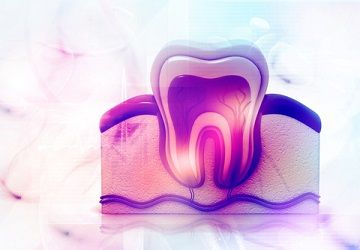Alzheimer's Drug Could Change How Dentists Treat Large Cavities
Researchers have shown a way to stimulate new dentin growth following infection or trauma involving the use of stem cells contained in a tooth's pulp.

A new method of stimulating natural tooth repair is under investigation by scientists at King’s College, London. If further testing proves successful, this new treatment method could transform the way dental treatments for large cavities are performed.
In an article published in Scientific Reports, researchers showed a way to stimulate new dentin growth following infection or trauma involving the use of stem cells contained in a tooth’s pulp. The stem cells were used to help repair damage from large cavities, which are typically treated using man-made cements or fillings.
Stimulation of the stem cells was catalyzed through the use of Tideglusib, a medication that has been used in clinical trials to treat neurological disorders like Alzheimer’s disease. The research team applied low doses of the drug to teeth through the use of a biodegradable collagen sponge. Over time, the sponge degraded and was replaced by new dentin. For the teeth involved in the study, complete, natural repair was achieved.
The scientists noted that this method of repairing teeth was simple and fast, and it could lead to a new approach in tooth restoration. Lead author of the study, Professor Paul Sharpe, said, “The simplicity of our approach makes it ideal as a clinical dental product for the natural treatment of large cavities, by providing both pulp protection and restoring dentin. In addition, using a drug that has already been tested in clinical trials for Alzheimer's disease provides a real opportunity to get this dental treatment quickly into clinics.”
In healthy individuals, a thin band of dentin is naturally produced in response to injury in order to seal the tooth pulp. However, the dentin band cannot effectively repair large holes in teeth that might be the result of trauma or severe infection. The use of contemporary therapeutic interventions, like cements, means that larger cavities and holes in teeth are never fully restored because the mineral level of the tooth cannot be returned to pre-injury levels. Further, fillings occasionally fail and infections spread, and dentists have to perform additional work to fill in an area that is larger than the original problem. Ultimately, the tooth might have to be extracted.
ACTIVA BioACTIVE Bulk Flow Marks Pulpdent’s First Major Product Release in 4 Years
December 12th 2024Next-generation bulk-fill dental restorative raises the standard of care for bulk-fill procedures by providing natural remineralization support, while also overcoming current bulk-fill limitations.